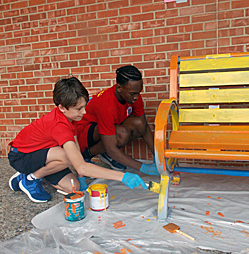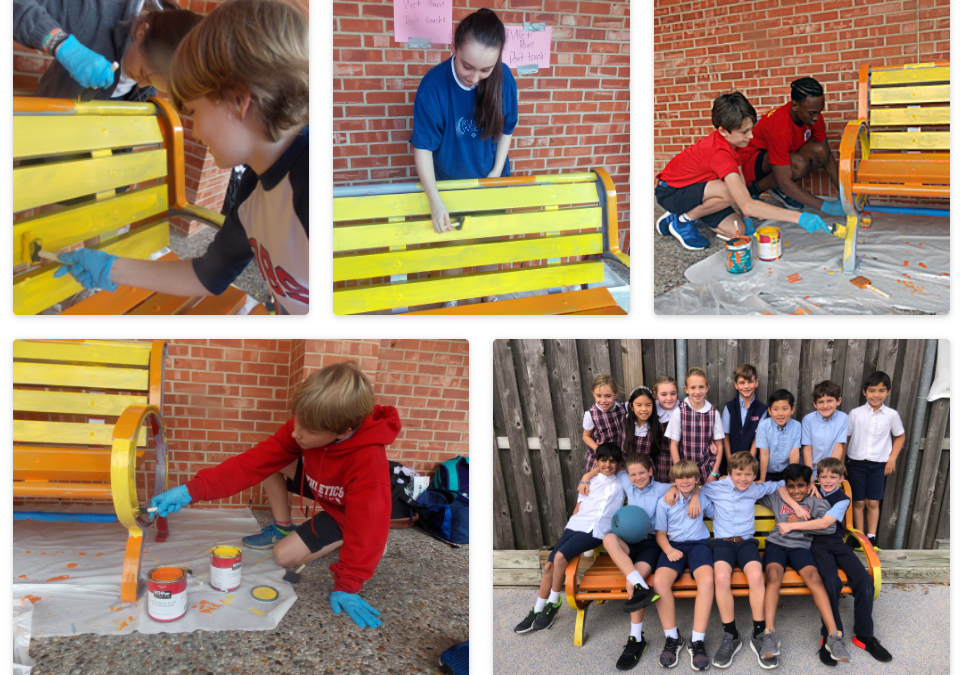Most parents want their kids to be kind. In fact, more than 90 percent of American parents say that being caring is among their top priorities for their children. But when you ask children what their parents want for them, 81 percent say their parents value achievement and happiness over caring, as published in The Atlantic article “Stop Trying to Raise Successful Kids.” Kids learn what’s important not by listening to what adults say, but by noticing what gets our attention.
What does that mean for educators trying to cultivate kindness among kids in the classroom, on the playground, and even outside of school? ROBS counselors, Drs. Melanie Gregg and Allison Hamff, share how ROBS students, teachers, and parents designed an intentional program of cultivating kindness and the ongoing impact of that effort.
How we went from talking about kindness to practicing it
ROBS has always valued the importance of developing character traits like kindness, gratitude, and compassion. The curriculum thoughtfully weaves character lessons throughout literature studies, the buddy program, social studies projects, and chapel reflections, just to name some of the applications. At the same time, we sensed an opportunity to engage our students more deeply in their own character growth.
In the fall of 2016, ROBS formally initiated a strategic planning effort to embolden its community of kindness. The goal was to find simple ways to infuse kindness into our everyday routine. Through emphasizing kindness, the hope was to not only positively influence our students’ school experience, but also to equip them to prioritize kindness and empathy throughout their day-to-day experiences. In addition to enriching our School community, research tells us that learning how to be kind is one of the most valuable life skills our students will ever learn.
The development of the Community of Kindness Strategic Plan involved teachers, parents, and notably, students. Student input was a critical element of the process for us. They not only contributed to the plan, but ongoing student leadership was ultimately listed as a directive within the plan. As a result, the Kindness in Action (KIA) group was created. Comprised of one boy and one girl from grades 4-8, the group’s main goal was to foster kindness and compassion through on-campus projects and programming. As soon as the group was created, they got down to work.
Here are a few of the programs they initiated.
Students Supporting Students
Nothing comes close to the impact one student can have on another. Knowing this, KIA arranged—with the help of the Student Support Office team—to have eighth graders take the lead on supporting the younger students when they were dealing with tough situations like being ignored by a friend, or betrayed by someone trusted to keep a secret. The seventh and eighth graders spoke to fourth graders about meeting challenging situations with kindness and inclusivity. Eighth graders also met with younger students one-on-one.
Other student-led initiatives included distributing notes of encouragement in student lockers, displaying words of wisdom posters throughout campus, and sharing written compliments during morning meetings.

Buddy Bench
One of the most notable projects was the Buddy Bench. Placed on the Lower School playground, the bench provided any student looking for playmates a way to signal to their peers that they were up for some company. Kindness in Action members filmed a segment on the student-produced daily broadcast KROB explaining how the bench worked. They invited students to sign the buddy bench pledge stating they agreed to look for students sitting on the bench and ask him or her to play.



More to come
The Kindness in Action team continues to refine their goals, initiatives, and even their structure year-to-year. For example, this year KIA divided into Lower School and Middle School groups to allow Lower School students a chance to spearhead projects specific to their division. The students have not finalized their 2019-20 slate of projects, but a few exciting things being considered include:
- The addition of a fifth and eighth grade pairing to the current buddy program as a way for the eighth graders to welcome in the newest members of Middle School
- An eighth grade support team aiding the Student Support Office with peer-to-peer talks
- An annual Kindness Week
2019-20 members of the Kindness in Action group

Our students are basically modeling what educational psychologist Dr. Michele Borba says about kindness in her latest book UnSelfie, Why Empathetic Kids Succeed in Our All-About-Me World.
- Kindness is contagious.
- Kindness needs a spark to ignite.
- Kindness spreads quickly.
- The more kindness is seen, heard, and practiced, the more likely it’s adopted as a habit.
- Kindness can be strengthened like a muscle, but regular workouts are crucial.
- Acts of kindness must be meaningful and varied to reap gains.
Kids learn kindness by helping, comforting, sharing, and cooperating, not through hearing lectures. In other words, the best way to teach kindness is to let the kids show us. ROBS students are leading the way.
Middle School Counselor Melanie Yard Gregg, Ph.D., and Lower School Counselor Allison Hamff, Ph.D. contributed to this post. Both practice at River Oaks Baptist School.

